The first assault on East Prussia. Part of 2
To turn the tide in their favor, the Soviet command decided in the offensive zone of the 11th Guards Army to introduce the main mobile unit of the front into battle - the 2nd Guards Tatsinsky tank corps under the command of Major General A. Tank Burdeynoy. The tank corps received the task, in collaboration with the 16th Guards Rifle Corps, to defeat the German group, delve deeper into the enemy’s defenses for 18-20 km and reach the Rominte River. At the second stage of the offensive, the Bourdeinay corps was to take Gumbinnen.
October 19 The 11-I Guards Army was supposed to complete preparations for entering the battle of the tank fist of the front. In the center of the battle formations of the Galician army, the 16 Guards Rifle Corps received the task of advancing to the west. The guardsmen were to bypass the enemy's powerful stallupenny positions from the south, dismember the German front and immediately break through the Pissa River. The 16 Corps was to occupy and expand the bridgehead on the right bank of the river. The offensive was to be held with the support of the connections of the left wing of the 8 and the right wing of the 36 of the Guards Rifle Corps. Meanwhile, the troops of the 8 Guards Rifle Corps, together with the left flank of the 5 Army, were to defeat the Stallupin group and take Stallupen. 1-I air army was supposed to contribute to a general offensive.
By the morning of October 19, formations of the 8th Guards Corps of the 11th Guards Army reached the front line of the Shallupen fortified position. The Germans had an exceptionally powerful defense, which they improved for a long time. After the artillery and aviation training guards went on the offensive. But, despite the serious support of artillery and aviation, the high combat effectiveness of the guard units, the offensive developed slowly. The German defense had to literally nibble, moving meter by meter. There was no special advance until 12 o’clock. The Germans stubbornly resisted and responded with fierce counterattacks. Only at 15 o’clock, repelling enemy counterattacks and suppressing the identified enemy firing positions, parts of the 8th Guards Corps were able to occupy several villages. By 16 o’clock the guardsmen were able to break through the enemy’s frontline positions at a front of 10 kilometers and wedge themselves in German defense in a number of places. The decisive role in the fight against enemy fortifications of the Stallupen long-term defense center was played by assault groups.
The general scheme of action of the assault groups was as follows. Assault groups attacked as part of rifle battalions. Coming out to the nodal, most powerful, four to six-amber pillbox, with the fall of which a gap was created in the defense of the enemy, the battalion with massive fire bound the enemy, isolated the attacked object. Guns, tanks or self-propelled guns that were part of the assault group were put forward to direct fire. From a distance in the 200-300 meters, they fired at long-term embrasures at the long-term fire point, preventing the enemy from crushing the infantry with machine-gun fire. Under the cover of fire, the blocking group of machine gunners and flame throwers crawled up to the fortification, sappers moved behind them. When the assault group reached the throwing distance (30-50 meters from the dota), artillery and armored vehicles stopped firing according to a conventional signal. The blocking group threw out to the firing point and tightly closed the loopholes (for this purpose they prepared fashin and other improvised material). Sappers undermined the German fortifications. In order to fend off a possible counterattack of the enemy, the rifle group was injected into the breach, supported by artillery, tanks and self-propelled guns that carried the fire deep into enemy defenses.
For example, the assault group of the commander of the engineer platoon of Lieutenant V.N. Churkin of the 17 regiment of the 5 th Guards Rifle Division suppressed the resistance of the four-diamond pillar with a rotating armored tower in the Dededen stronghold. The first attempt to take a long-term fortification failed. The Germans organized a counterattack, and the Soviet soldiers retreated to their original positions. Then the guns and mortars forced the enemy's infantry to lie down. Sappers made a workaround, and went to the fortification. They blinded the embrasures and laid 100 kg of explosives. The explosion destroyed part of the wall of the dota, the German garrison was destroyed.
Captain F. N. Vasilenko’s assault team successfully took the enemy’s six-anti-burglar dot in the Raudonen stronghold. First, three heavy KV tanks under the command of Captain Kurako stepped into the rear of the long-term structure and destroyed the German artillery battery. Enemy infantry was crushed. Soviet sappers bravely closed all six embrasures and laid 120 kg of explosives at the entrance. The explosion destroyed the door, and the garrison was liquidated. Thus, during the day of the battle, units of the guard corps captured and destroyed 19 dots.
Thus, by the end of the day, during the heavy battle, the formations of the 8 Guards Corps were able to penetrate the main line of defense of the stallupuena position. Soviet guardsmen advanced deep into the German defense on 3-5 km and intercepted the Stallupen-Gross Rominten railway. However, the corps command made a number of mistakes. The corps continued a frontal attack, losing time and incurring unnecessarily high losses. The actions of the corps command did not differ in flexibility. The opportunity to regroup forces on the left wing and to bypass powerful enemy fortifications from the south and southwest was not used.
Command of the 11 Guards Army (from right to left): Major General of Engineering Troops V.I. Zverev, Lieutenant General of Artillery P.S. Semenov, Lieutenant General I. I. Semenov, Colonel General K. N. Galitsky, General Major of Tank Forces P. N. Kulikov, Major General V. G. Guziy, Col. DF Romanov, Col. Yu. B. Ibatulin
In the center of the army of Galitsky, where the 16 Guards Rifle Corps attacked, the Soviet troops achieved greater success. The 1-I Guards Rifle Division and the 213-I separate tank brigade quickly shot down the German units, which held defenses on the approaches to the River Pissé. True, the attempt to force the river and seize the bridgehead failed. Strong barrage machine gun and mortar artillery fire of the enemy stopped the guards.
In general, the Pissa River did not seem to be a serious obstacle - the width of the whole 5-10 m and depth in 1,5 m. However, for the heavy weaponry there was a high steep bank, height in 10-12 m. Moreover, on the right bank, the Germans created a rather strong defense line . Two lines of trenches were equipped here, they were reinforced by special machine-gun platforms and mortar positions. On the tank-accessible directions the enemy put up minefields. To overcome such a defense on the move failed. I had to pull up the artillery and repeat the artillery preparation. Only after the main enemy firing positions were crushed, the troops began to force the river. The Germans organized several strong counterattacks to throw the Soviet troops into the river. But, by the skillful actions of Soviet artillerymen and tankmen, their attacks were repelled. In addition, to cover the crossing of the troops, assault and bomber aircraft were called in, which launched powerful blows at the enemy. German troops could not stand a strong blow and began to retreat to the west.
There was a threat that the Soviet troops would intercept the important Milliunen-Mottskunen and Gross Trakenen-Tollmingkemen highways, which led to the division of the German group into two groups of forces — the northern (in the Stallupenen area) and the southern, and the possibility of maneuvering forces along the front. In addition, there was a threat to bypass Stallupenen from the south and southwest. The German command immediately organized a series of strong counterattacks, in order not only to stop the Soviet troops, but also to drop them beyond the Piss River. Guardsmen fought hard, fighting off enemy counterattacks and continued their slow advance.
On the left wing of the corps, units of the 31 th Guards Rifle Division were advancing with the support of the regiment of the ACS. The division commander, Major-General I. D. Burmakov, used the success of the neighboring 1 Guards Division and made a detour to take a large settlement and a road junction Poghonen, which was well protected from the east. 99-th regiment of the division made a bypass maneuver, shot down the enemy garrison and occupied the village. The regimental commander Konstantin Gavrilovich Kuznetsov was awarded the title Hero of the Soviet Union for this success. After this, the division successfully crossed Pissen’s arm and advanced to the west. Guardsmen expanded the bridgehead and captured strongholds Evainen and Kassuben.
Thus, the successful actions of the October 19 Guards divisions provided the opportunity to enter the 2 Guards Tatsinskogo tank corps into battle. The necessary springboard for entering the breakthrough of a mobile connection on the right bank of the River Pissa was created. General Burdeyny received an order to start moving from a concentration area to the offensive zone of the 16 Guards Rifle Corps. The hull had 210 tanks and 41 ACS. The 16 Guards Rifle Corps, which was supposed to support the tank attack, was reinforced by another division (the 11 Guards Rifle Division).
The actions of the neighboring 5 and 31 armies on this day were not marked by great success. The 5 Army tried to force its way through the powerful German defenses and in a day advanced only 3 km. The 31 Army advanced during the day to 5-7 km. Its right-flank 71 th infantry corps took a major stronghold of the enemy, Shittkemen, and went out to a large wooded area that covered the road to Goldap.
The German command continued to transfer new forces to a dangerous direction. The Gumbinnen grouping was reinforced at the expense of the troops located on secondary lines. 3 th and 4 th cavalry brigade, a brigade of assault guns were thrown here. At the same time, units of the 5 Panzer Division and the German Hering corps were deployed to the battle area. In addition, more 18 October on the orders of Hitler began to form part of the Volkssturm (militia). The entire male population of East Prussia at the age of 16-60 was mobilized. Part of the hastily formed battalions of the Volkshturm were immediately thrown into battle. Due to some success of the 11 Guards Army and the lag of the neighboring 5 and 31 armies, there was a threat of a strong German flank counterattack from the north.
The entry of Soviet troops in East Prussia
20 October. Entering into battle 2-th Guards Tank Corps. At night, the first echelon of the tank corps (25-I and 26-I Guards Tank Brigades) crossed the River Pissa. At the same time, they destroyed the remaining enemy groups in our rear. The second echelon of the corps (Guards 4-I tank and 4-I motorized rifle brigades of the corps) also came to the river.
The attack in the early morning failed. The weather was not flying, and the assault and bomber aircraft were supposed to inflict powerful air strikes and pave the way for tanks. Only at the beginning of the 11 hour did powerful artillery and air preparation begin. At the beginning of the attack tankers and infantry was a success. German defense was broken through. The tanks of the 25 and 26 of the Guards brigades crushed the enemy infantry, shot down units of the Hermann Goering tank regiment and moved west. During the movement, the marching orders of the German artillery and infantry with armored vehicles were crushed. The Germans suffered heavy losses.
However, the arrows of the 31 division were somewhat behind the tankers. The Germans tried to use it, cut off the Soviet infantry from the tanks and destroy it. However, Burdeyniy and the division commander Guryev quickly reacted and brought into battle the second echelons of the tank corps and the Guards division. Enemy attack was repulsed. Soviet troops occupied several more strongholds and expanded the breakout zone.
The Germans organized another attack from the Gross Trakenen region, where the 102-I tank tank brigade and the 1-Tank Division of the German Hering corps went on the offensive. German troops attacked the right flank of the Burdeynoi corps. They were supported by aviation, which struck groups of 20-30 aircraft. The deputy commander of the 2 Guards Tank Corps, Colonel S. K. Nesterov, organized a rebuff to the enemy. He ordered to cover the tanks from the air with a smoke screen, German aircraft could not deliver targeted strikes, and deployed two tank battalions in a threatened direction. In addition, Nesterov caused fighter aircraft. German counterstrike reflected. Unfortunately, Stepan Kuzmich Nesterov died in this battle. By evening, the Soviet troops passed about 20 km and reached the enemy’s major stronghold, Walterkemen. Here, the Germans along the right bank of the Rominte River passed another defensive line.
In the meantime, the German command continued to build up the Gumbinnen grouping. In the area of Gumbinnen, units of the 2 th parachute motorized Hermann Hering division and the 5 th panzer division were unloaded. This group could threaten the right flank of the Soviet assault force. The situation in the Stallupenen direction also raised concerns. Here, German troops, which included the 102 tank tank brigade and the 1 sky parachute tank division Hermann Goering, successfully restrained the attacks of the Soviet troops and could also threaten a flank blow from Gross Trakenen. The Germans were afraid that here the Soviet troops would be able to go to the flank and rear of the Stallupensky group, and its defeat led to a serious widening of the gaps in the defense. Therefore, in this direction, the battles were stubborn, the Germans constantly went over to the attacks, hoping to succeed in reaching the rear of the 2 tank and 16 guards rifle corps, surround and destroy the shock group of the 3 Belorussian front.
Throughout the day, parts of the 8 Guards Corps continued to storm the enemy's stallupen positions, but without much success. They advanced only 1-2 km. Although success in this area could greatly facilitate the position of the tank Burdeyno corps. The left-handed 36 of the October 20 Guards Corps successfully advanced and advanced to a large communications hub, the Tallmingkemen. The troops of the 31 Army by the end of 20 October were on the outskirts of Rominten.
Source: Galitsky K. N. In the battles for East Prussia
Entering the battle 28-th army
Despite the success of the shock group of the front and 11 of the Guards Army, the situation was difficult. Flank 5-I and 31-I armies far behind the 11-th Guards Army. Particularly large lag was in the direction of Stallupene. The German command seriously strengthened the Gumbinnen grouping, and for the army of Galitsky a strong threat arose on the flanks. The front of the 11-I Guards Army stretched to 70 km, its forces and means were seriously exhausted. Therefore, the Soviet command needed to take decisive measures to level the situation. The front command decided to bring the 28 army into battle under the command of Lieutenant General A. A. Luchinsky.
The command of the 11 Guards Army considered that the best solution would be to build on the success of the 2 Guards Tank Corps and advanced units of the army. Entering here in the battle of the second echelon of the front allowed to create conditions for the defeat of enemy forces in the area of Gumbinnen, and then allowed to develop an offensive on Insterburg and further on Koenigsberg. However, Chernyakhovsky decided to use the 28 army in the Stallupenny direction, in the junction between the 5 and 11 guards armies. The army of Lucinschi was to take Stallupen and develop an offensive along the Gross Trakenen-Augstupenen line. Moreover, at first they planned to enter into battle only one corps, the remaining two corps of the 28 army remained in reserve of the front. They were planned to enter the battle after the capture of Stallupen.
As a result, the troops of the 28 Army were drawn into heavy battles on the Stallupene direction, they had to break through the enemy’s deep-level and long-term defense. Subsequent actions showed that this decision of the front command was erroneous. The front lost time, no less than 3-4 days, the 28-I army spent time and energy on the assault on the advance prepared defensive line with reinforced concrete fortifications and took Stallupen only on the night of October 25. Gumbinnen, despite the stubborn battle, could not be taken at all. In general, the Soviet offensive gradually developed into a counter battle with suitable German divisions with a large number of tanks.
11-I Guards Army received the task of advancing to the north-west, to take Gumbinenn. Part of the forces of the army was to develop an offensive to the west and south-west, take Nemmersdorf and go to Darkemen. The troops of the 5 Army were to bypass the Stallupenen from the north and, in cooperation with the forces of the 28 Army, surround and destroy the Stallupin enemy grouping. The offensive of the 5 Army was supposed to support the 1 Armored Corps under the command of Lieutenant-General Tank Troops V. V. Butkov, who was transferred from the Baltic Front 1. The corps was in a weakened composition and at that time had only two brigades - the 159 tank and the 44 motorized rifle (40 tanks). Butkov's corps received the task to go out to Tutschen and then strike in the direction of Gumbinnen.
On the night of October 21, the 2 Guards Tank Corps continued the offensive. General Burdein believed that it was impossible to wait, it was necessary to develop the first success. At nightfall, the right-flank 26-I Guards Tank Brigade forced the r. Rominte. However, night, fog, German counterattacks and a well-organized anti-tank artillery system stopped the further advance of the brigade. 25-I Guards Tank Brigade defeated the opposing enemy forces in the Walterkemen area, captured the crossing of Rominte. During the night, the brigade passed 12 km and by the morning of October 21 was in 9 km south-west of Gumbinnen. The 4-I Guards Motorized Rifle Brigade crossed behind it. At this time, the 4-I Guards Tank Brigade also successfully crossed the river. To reinforce the onslaught of the Burdeyny corps, the 11 th Guards Rifle Division was handed over to it for operational control.
In the morning, the tank crews developed success. 25-I brigade captured the concrete bridge across the river. Anerapep length 45 m (the Germans did not have time to destroy it) and took a major stronghold of the enemy Nemmersdorf, which was located on the right bank of the river. At the same time, one battalion of the brigade went to the immediate approaches to Gumbinnen - 5-6 km south of the city. However, I could not go further, here the Germans had a serious defense.
At this time, Burdeyno made a mistake. Instead of concentrating all forces on Gumbinnen, where the Germans had not yet completed the regrouping of troops, he decided to secure his left flank and support the offensive of the 31 Guards Division, which met with serious opposition from the enemy in the south-west. He turned south and south-west of the 4 tank and 4 motorized rifle brigades. The brigades supported the offensive of the 31 division and defeated the enemy in the area of its offensive. However, time was lost, the tankers were diverted from the main direction to the secondary.
At this time, German reserves advanced from the depths managed to occupy the line of defense a few kilometers south of Gumbinnen. In total, the Germans managed to create several lines of defense in the Gumbinnen area. In the fortified area were included all the nearby villages, heights and he had 12 powerful pillboxes. For the defense of the city were used part of the corps "Hermann Goering" and the main forces of the Gumbinnen group.
The tank crews of the 26 Brigade and the infantry of the 11 Division, which were advancing along the Walterkemen-Gumbinnen Highway, had to fight hard with the 2 parachute division of the motorized German Hering division. Persistent battles were fought at the station Perkallen and Gershtena. By the end of the day, Soviet troops advanced 3-4 km here and ended up 3-3,5 km from Gumbinnen. Simultaneously, the 4-I tank and 4-I motorized rifle Guards brigades, having solved the task of supporting the 31-th Guards Division, again turned north and launched an offensive bypassing Gumbinnen from the south-west. Beating the enemy's attacks, Soviet tankers took up positions in 3-4 km south-west of Gumbinnen. By that time, the 31-I and 26-I guards rifle divisions had advanced 12 km and provided the left flank and rear of the tank corps from Darcemen.
Thus, the 2 Guards Tatsinsky tank corps went to the nearest approaches to Gumbinnen. However, here he met serious enemy forces that had a significant number of tanks and artillery, including heavy and anti-tank. The oncoming battle began. The settlements near Gumbinnen passed several times and hands in hands. German counterattacks followed one after another.
On the Grossstrakenensky direction of the 16 division of the Guards Rifle Corps, heavy combat was waged all day with German tanks and their motorized infantry 102 tank brigade 1 of the Hermann Goring parachute and tank division. The Germans still tried to break through to the rear of the Soviet troops, but could not do it. All their attacks were repelled. However, the Soviet troops were able to advance only 1-3 km in a day.
In the Goldap direction, parts of the 36 Guards Rifle Corps occupied an important communications hub Tallmingkemen (Tallmingkemen) during a stubborn battle. The Germans tried hard to keep this settlement, as it allowed them to organize a strike in the north towards Gross Trakenen. And strikes from the north and south could have led to the encirclement and death of the corps of Burdeinny and part of the 11 Guards Army. Only by 14 hour. October 21 Tallmingkemen completely cleared of the Germans. Part of the 18-th Guards Division reached the large road junction Gross Rominten, covering the long approaches to Goldap. The battle continued until October 14 22 hours. Gross Rominten took. The left flank of the 18 Division reached the nearest approaches to Goldap.
The rifle corps of the 28 Army (the two corps remained in reserve at the front), advancing on Gross Trakenen, did not achieve success that day. The 5 Army continued its stubborn fighting in the Stallupenen direction and advanced slightly. Parts of the 31 Army fought in the forest in the Shittkemen area and, overcoming the enemy's resistance, reached the line in 10-12 km east of Goldap. As a result, the entry into battle of the 28 Army at the junction of the 5 and 11 Guards armies did not lead to the expected success. It would be more reasonable to introduce fresh forces in the Gumbinnen and Darkemen areas.
In this case, special attention should be paid to the Goldap direction. On October 20, the German command sent the Führer motorized grenadier brigade (near 80 tanks) from the reserve of the Army Group Center to the Goldap area. By the end of October 21, the motorized brigade was concentrated in the Goldap area and was ready to launch a counteroffensive. A second strike force was created in the Gumbinen area. The German command planned to launch strong counterattacks from the north and south in order to at least stop the Soviet offensive. If successful, the German counterattacks could lead to a heavy defeat for the 2 Guards Tank Corps and the 11 Guards Army.
To be continued ...
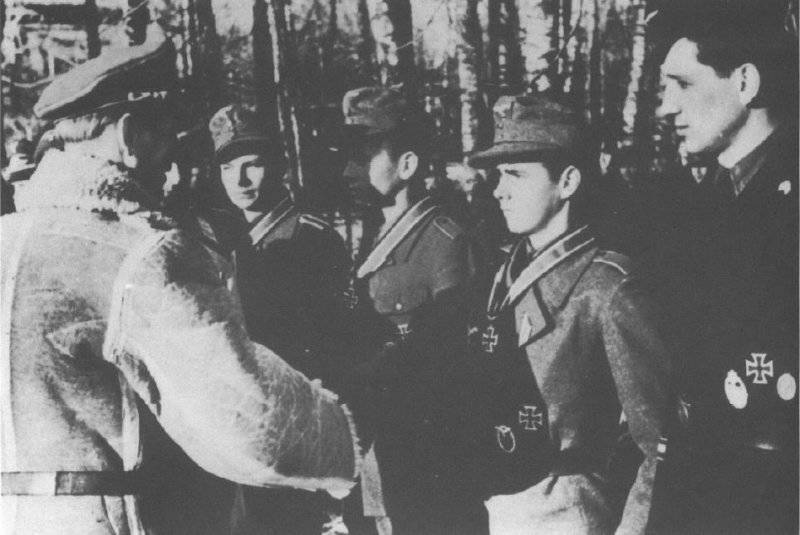
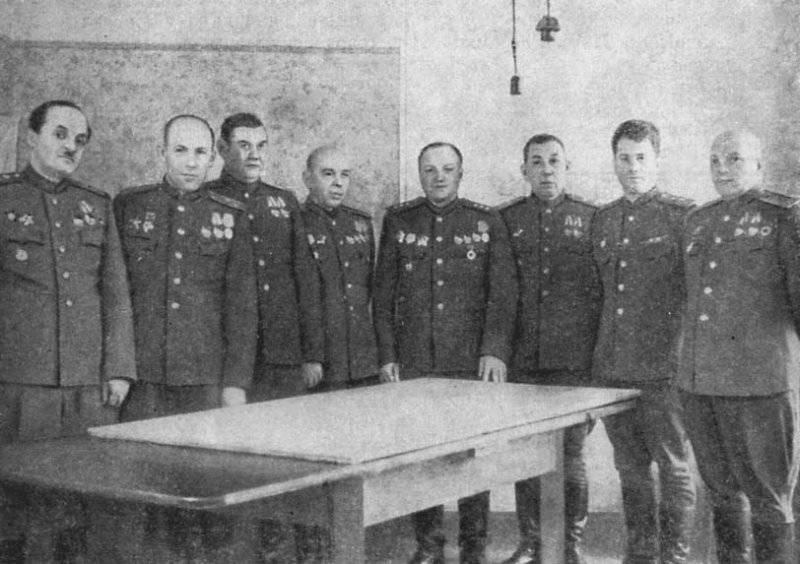
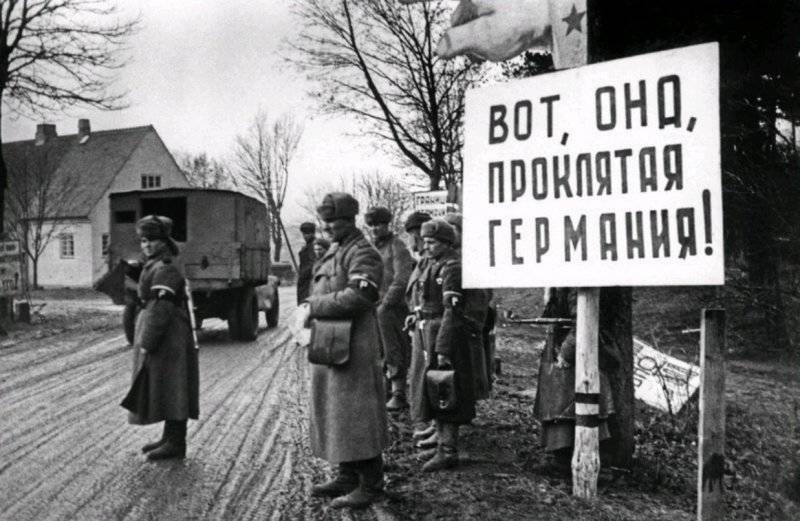
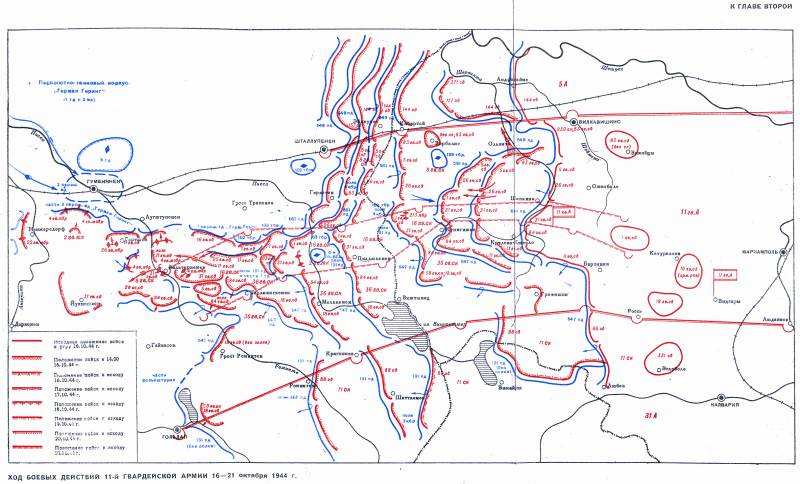
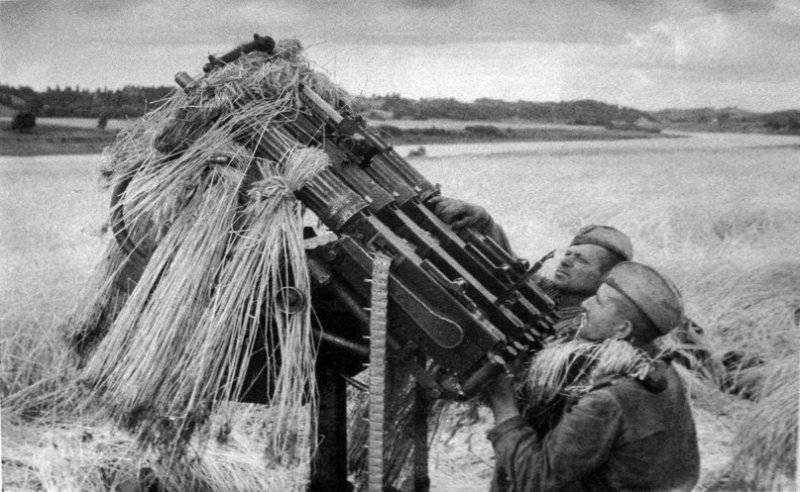
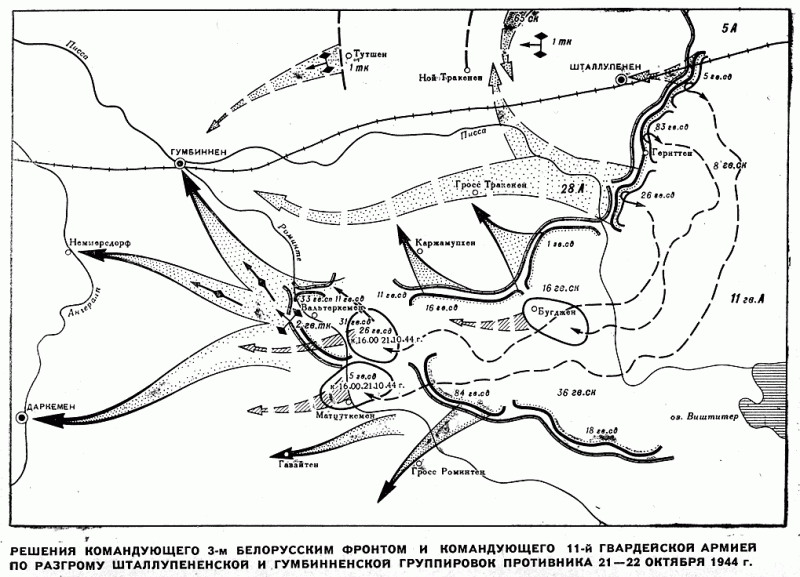
Information